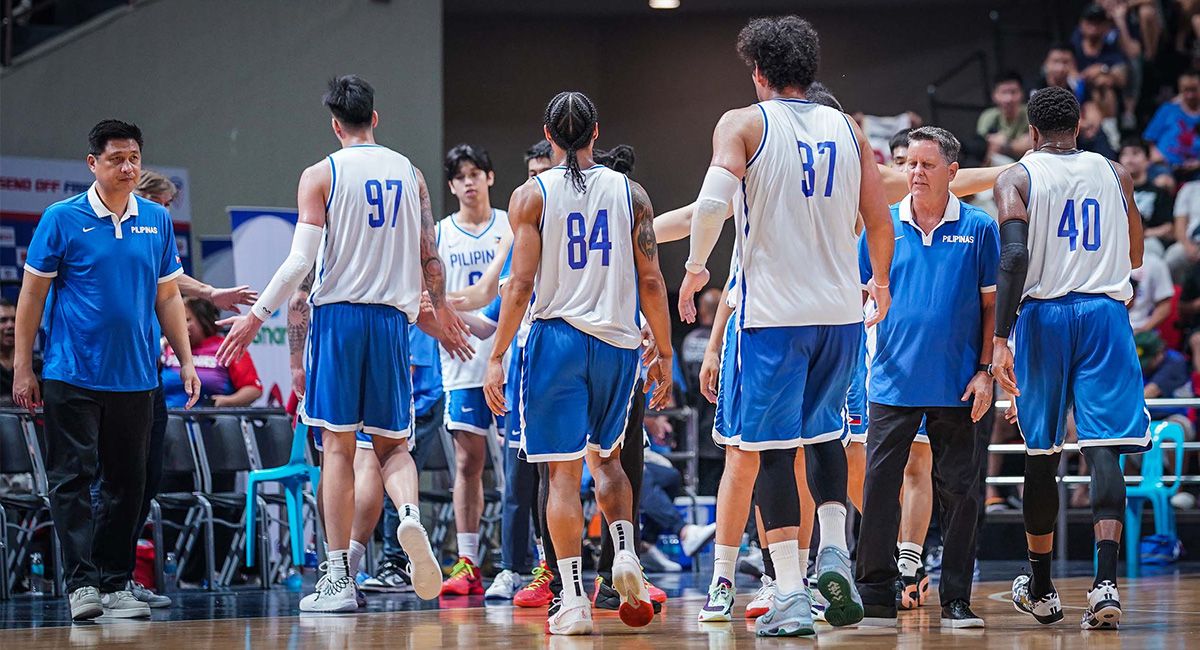Cone explains why expanding his Gilas pool won’t happen

GILAS Pilipinas coach Tim Cone emphasized Monday the chance of adding players to the current pool of 12 regulars plus two alterates, as what some critics want him to do, will not happen, or ever happen, as long he is Philippine national coach.
Speaking at a news conference, Cone said he will continue using the same pool of players in the coming international campaigns since this was the most practical considering the limited training period and teaching the triangle offense, Gilas’ main weapon, is a complex process that also takes time.
As things stand, players in the pool know the offense by heart, are familiar with one another and these factors have made the team competitive as shown by the results of the Olympic Quaifying Tournament recently held in Riga, Latvia where Gilas beat the world No. 6 in their home court.
The policy was reiterated as the country heads to the November window for the FIBA Asia 2025 qualifiers.
“To be honest, absolutely not,” said Cone, when asked during the press conference of the Samahang Basketbol ng Pilipinas on whether they are considering adding players to the pool amidst a spate of injuries. “We are not going to expand the pool.”
The pool will remain the same, composed of Justin Brownlee, Kai Sotto, Dwight Ramos, June Mar Fajardo, Scottie Thompson, Chris Newsome, Jamie Malonzo, AJ Edu, CJ Perez, Calvin Oftana, Carl Tamayo, and Kevin Quiambao, with Japeth Aguilar and Mason Amos serving as alternates.
The small number of members in the Gilas pool was in focus after the team was limited to 11 players following an injury to Scottie Thompson.
In explaining his philosophy, Cone said the absence of a lengthy preparation to come together and teach the triangle offense and defensive schemes it is implementing with Gilas Pilipinas were the reasons why he needs to keep the pool small.
“Because of the short preparation time we have, the teaching part of the team is much harder when you have a big pool. If you have 18 guys on your team, you have to teach all 18 your system. And it gets very unwieldy and difficult to do that especially if you are only talking about 10 days or seven days,” said Cone.

“If you’ve got a whole season, a whole year season to teach 18 guys, you can teach 18 easily over a period of time. But with short preparation time, it’s like if you are going to teach five people how to do something, you can do it quickly.
“But if you are going to teach 25 people to do something, it takes a longer time to teach all 25. And that’s an exaggeration. But that kind of what the program is all about that’s why we try to go with a tight, smaller pool because the teaching is less, and it has to be because the preparation time is less,” said Cone.
Availability of players
The availability of players also came into play in the decision as to the preparation time since it is not realistic for Gilas to implement a longer build-up since the members of the pool come from different leagues, overseas included.
“We have to have this preparation time because we can’t always get all the players that we want. You can see how it lines up and there’s a reason why we have a small pool,” said Cone.
“I would prefer to have a bigger pool. I would have preferred to have a longer preparation time. Any coach would. I prefer to prepare for a month or two before we go into a tournament. It’s just not feasible. We have to work with what we have.”
But even with his philosophy, Cone believes that if the time comes that Gilas needs a player, they will answer to the call, just like in the Riga FIBA OQT where they needed someone to fill out the last roster spot after Thompson was ruled out due to an injury.
“I think that the players around the country, if we call, they will come, unless something personal has happened or what happened last time, it happened so late, we couldn’t get visas for everybody. And that happened,” said Cone.
Cone plan is working
So far, Cone believes that the philosohhy is working with the chemisty already building following their second FIBA window together.
“That’s basically the challenge. If you bring somebody on the team, somebody has to be removed. Right now, the chemistry is strong. These are really, really difficult decisions,” said Cone.
“But really, we will try to stick to the 12 because we already have a history with the 12. We have preparation with those 12. Like we keep on saying, it’s cumulative. Everytime we bring in someone new, we have to start from this point and go forward,” he added.
“All in the past won’t mean much if we continue to change players. We want to keep the players as we can as we are accumulating experiences together,” said Cone.





